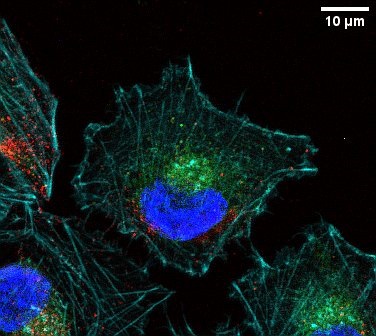Japanese Himawari Satellites Uncover New Insights on Venus' Atmosphere

In a groundbreaking study, researchers from the University of Tokyo have successfully repurposed Japan's Himawari-8 and Himawari-9 meteorological satellites, originally designed to monitor Earth's weather patterns, to observe Venus' cloud-top temperatures. This innovative approach has revealed significant atmospheric wave patterns on Venus, drawing on data collected over a decade from 2015 to 2025.
The Himawari satellites, which were launched in 2014 and 2016, utilize advanced multispectral imaging capabilities to track various atmospheric phenomena. Gaku Nishiyama, a visiting researcher leading the study, noted that while the atmosphere of Venus has been known to exhibit year-scale variations in reflectance and wind speed, no planetary mission has managed continuous observation for longer than ten years due to the limited lifetimes of previous missions.
"Monitoring the temperature variations in Venus' cloud tops is crucial for understanding its atmospheric dynamics, including thermal tides and planetary-scale waves," said Nishiyama in a statement released by the University of Tokyo on July 1, 2025. The study emphasizes that ground-based observations are hampered by Earth's atmospheric interference and the sunlight during daytime, making the Himawari satellites particularly valuable for this type of long-term monitoring.
The research team created a comprehensive data archive by extracting images of Venus from the Himawari satellites' Advanced Himawari Imagers (AHIs). They identified 437 occurrences, tracking variations in cloud-top temperature during specific alignments of the satellite, Venus, and Earth. Their analysis confirmed variations in thermal tide amplitude and changes in planetary wave amplitudes over time, suggesting potential links to variations in Venus' atmospheric structure.
Despite limitations in data resolution, the findings have implications for future planetary science. Nishiyama highlighted the importance of this method, stating, "We believe this method will provide precious data for Venus science because there might not be any other spacecraft orbiting around Venus until the next planetary missions around 2030."
The study also revealed calibration discrepancies in data obtained from earlier planetary missions, opening new avenues for long-term, multiband monitoring of other celestial bodies, including the Moon and Mercury.
Experts in planetary science, such as Dr. Amelia Chen, Assistant Professor at the Massachusetts Institute of Technology, commented on the significance of the findings. "This innovative use of meteorological satellites expands our toolkit for planetary observation, especially for bodies in our solar system that are currently not being actively studied by dedicated missions," she stated in an interview on July 2, 2025.
The implications of this research extend beyond Venus' immediate atmospheric conditions; it could reshape our understanding of planetary evolution and dynamics across various celestial bodies. As Nishiyama pointed out, the insights gained from Venus may lead to better assessments of physical and compositional properties on other planets, thereby enhancing our knowledge of their atmospheric behaviors and potential habitability.
This study marks a significant leap in planetary observation, demonstrating that existing Earth-based technology can provide valuable insights into our neighboring planets. As the scientific community anticipates the next wave of planetary exploration missions, the findings from the Himawari satellites underscore the potential of repurposing existing technology to uncover the mysteries of our solar system.
In conclusion, the successful application of the Himawari satellites for observing Venus not only opens a new chapter in planetary science but also illustrates the innovative spirit of researchers who continuously seek to expand our understanding of the cosmos. As we look towards future missions, the groundwork laid by this study could prove invaluable in guiding new explorations into the atmospheres of other planets and moons in our solar system.
Advertisement
Tags
Advertisement





